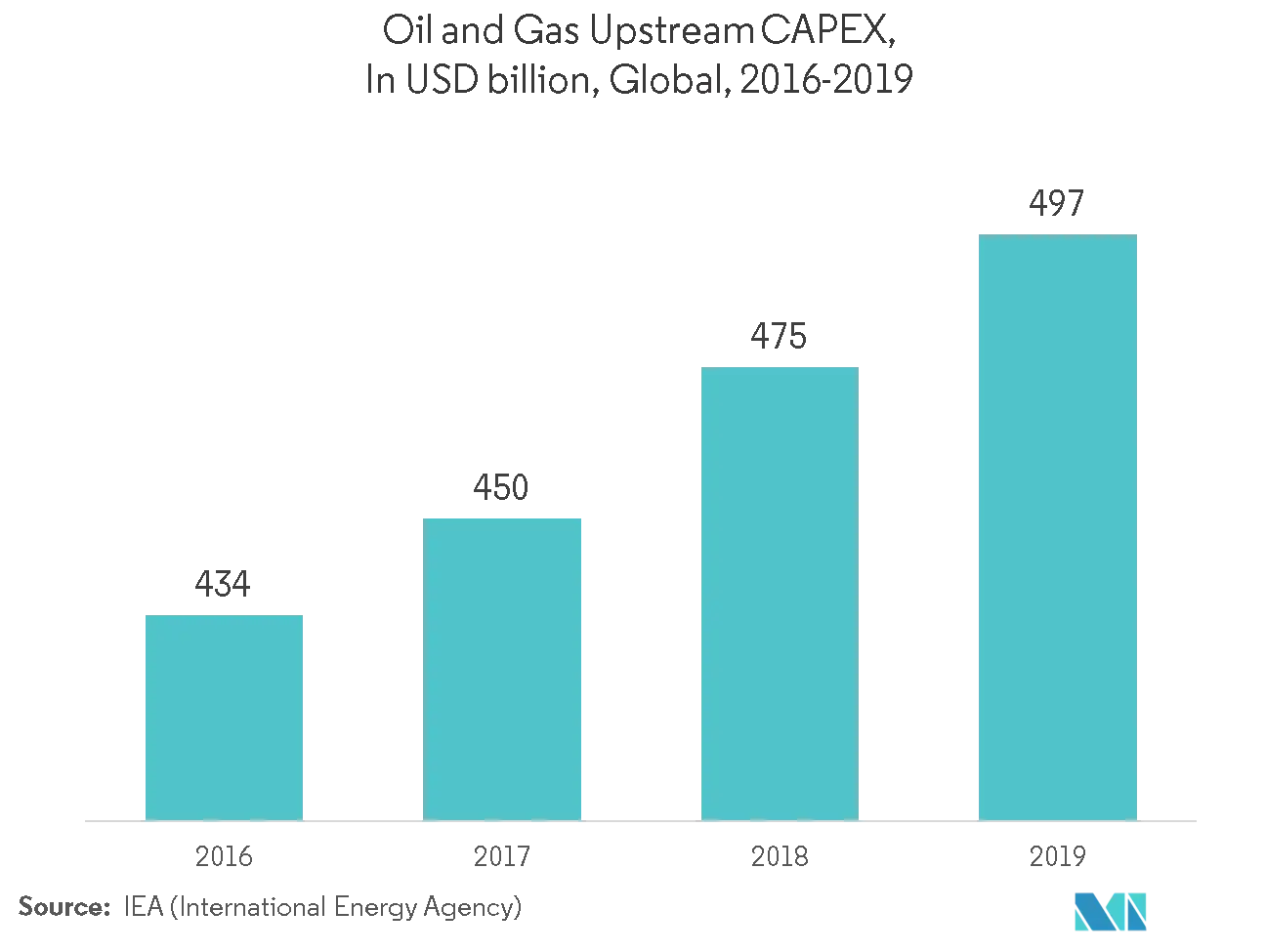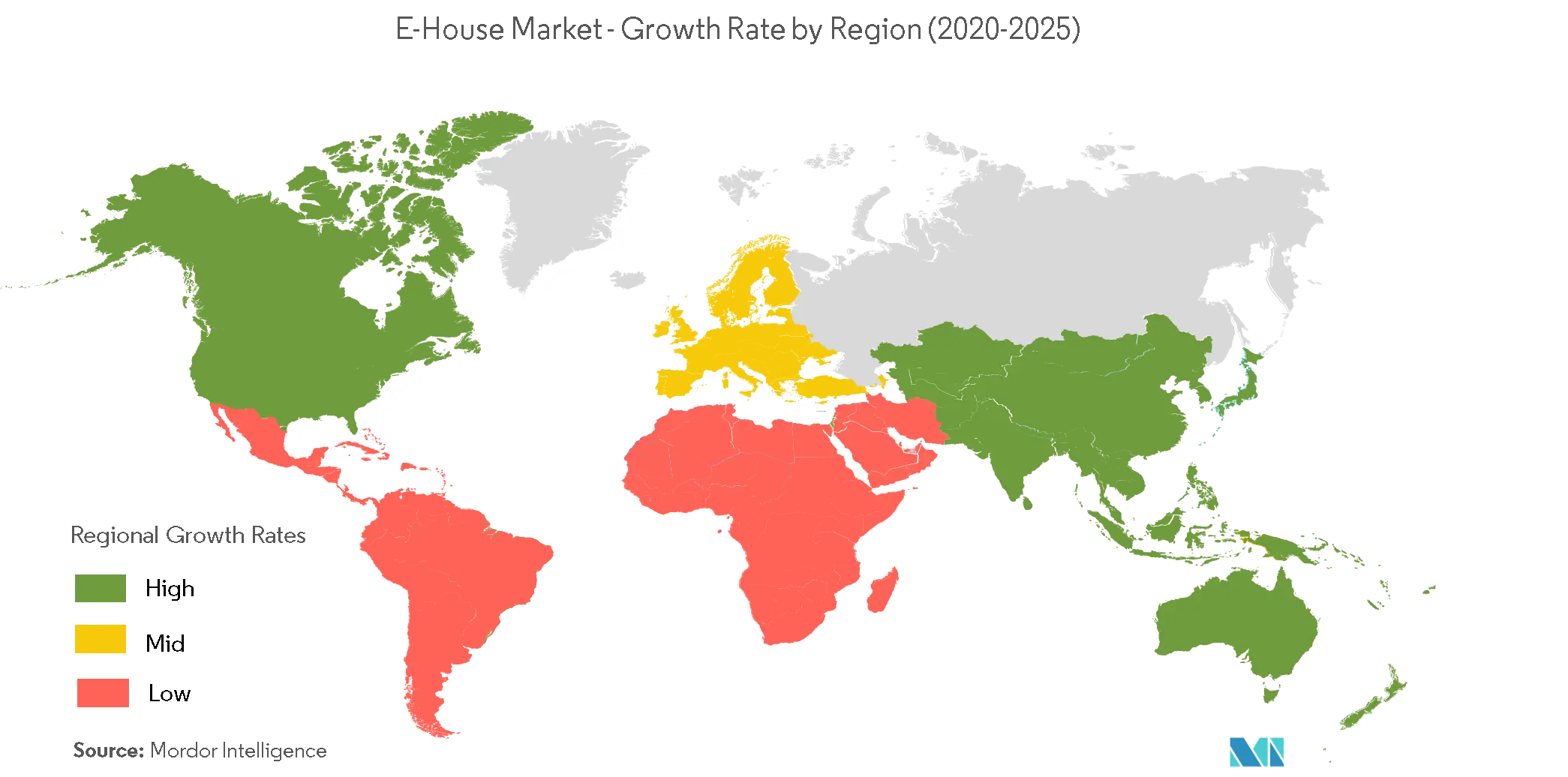Market Trends of E-House Industry
This section covers the major market trends shaping the E-House Market according to our research experts:
Upstream Sector in Oil and Gas to Witness Significant Share
- The exploitation of shale reserve has led to an increase in demand for energy and power services. According to IEA, the global gas demand is expected to grow by 1.6% a year for the next five years, with consumption reaching almost 4,000 billion cubic meters (bcm) by 2022, up from 3,630 bcm in 2016. China will account for 40% of this growth. Hence, the upstream segment is expected to be one of the largest segment for the e-house market.
- Traditionally, players in the oil and gas industry obtain their switchgear, drives, and automation systems from multiple electrical equipment suppliers and obtain their electrical houses through fabricators. But the demand to reduce risk, costs, and delivery time has steered the industry away from this practice, and the part of CAPEX in the upstream sector is contributed to the e-house.
- There is a clear trend towards consigning an integrated, installed, and pre-commissioned electrical and automation system together with the complete electrical house through various players. For instance, in June 2019, a multi-level E-house designed, engineered, and manufactured by Shaw Controls has been supplied as a fit-for-purpose solution at a South African port.
- The solution comprises five modules: three at ground level, with two above. The substantial structure, including all electrical substation equipment, weighs approximately 90 tonnes. Further, an additional E-house comprising one module for a separate LV substation has also been supplied.
- Further players such as Enexis announced to deploy eleven e-house substations in the northern Netherlands, where grid capacity for large scale clean energy projects, including oil and gas projects, is limited. The company said it would invest EUR 43 million in the plan to speed up the energy transition.
- Further new construction projects for oil and gas are investing in the e-house deployment, which adds to the growth of the market. For instance, Petrobras announced they are developing a new natural gas processing plant in the site of its Rio de Janeiro Petrochemical Complex (Comperj) in Rio de Janeiro, Brazil. The plant, known as UPGN, is a part of the Rota 3 or Route 3 pipeline project and will be the largest of its type in the country.
- It is estimated to cost around USD 600 million, where the plant will also be equipped with two processing trains. It will feature a customized e-house electrical solution, which will be the largest in Latin America. The e-house will be a modular outdoor enclosure covering an area of 800m². It will house electrical equipment, including transformers, switchboards, voltage panels, and bus ducts. The solution will connect all the electrical equipment involved in providing power, protection, and distribution, and reduce the risk of outages.

North America Accounts to Hold Significant Market Share
- North America is accounted for to hold a significant market share. With increasing industrial units in oil and gas, mining, etc., and further with the residing of global players such as ABB Ltd, Siemens AG, etc., the market tends to grow significantly.
- Canada is one of the largest producers of oil and gas in the world. Their oil and gas industry plays an important role in the country’s economy. Oil sands remain its primary source of hydrocarbon production, comprising over 90% of the country's total oil reserves. As per the Canadian Association of Petroleum Producers (CAPP), the oil production in the country is expected to reach 5.4 billion bbl/d in 2030, and oil sands are expected to account for 70.7% of the total production. This caters to the demand of e-house during the forecasted period.
- Further, according to the US Geological Survey, the capacity utilization of the United States mining industry is gradually increasing since 2016. In 2019, capacity utilization increased to 91%. ABB provides pre-fabricated containerized e-houses for mining applications. The e-house can also be installed close to the main loads, which reduces the power and control cable size and length. Its ABB's MineOptimize e-house solution can lead to cost savings upto 40%.
- Further, utilities provide the public with essential commodities or services such as power, water, and natural gas. The number of electric utility companies operates in the United States country is estimated at over 3,300, with around 200 of them providing power to the majority of users. Further applications in an internal and external lighting system, fire suppression system, Heating, ventilation, and air-conditioning (HVAC) drives the growth of e-house in the United States.
- Furthermore, Huge shale gas development across North America and offshore deepwater exploration and production activities were the hallmarks of the oil & gas industry in the past decade owing to advancements in technologies. However, the crude oil price plunge has impacted this industry in the past few years, and its trading way below its all-time high. FPSO/FSO and wellhead platform for offshore production and refining complexes require an integrated electrical solution, which led the oil & gas industry for the demand of an e-house solution.

